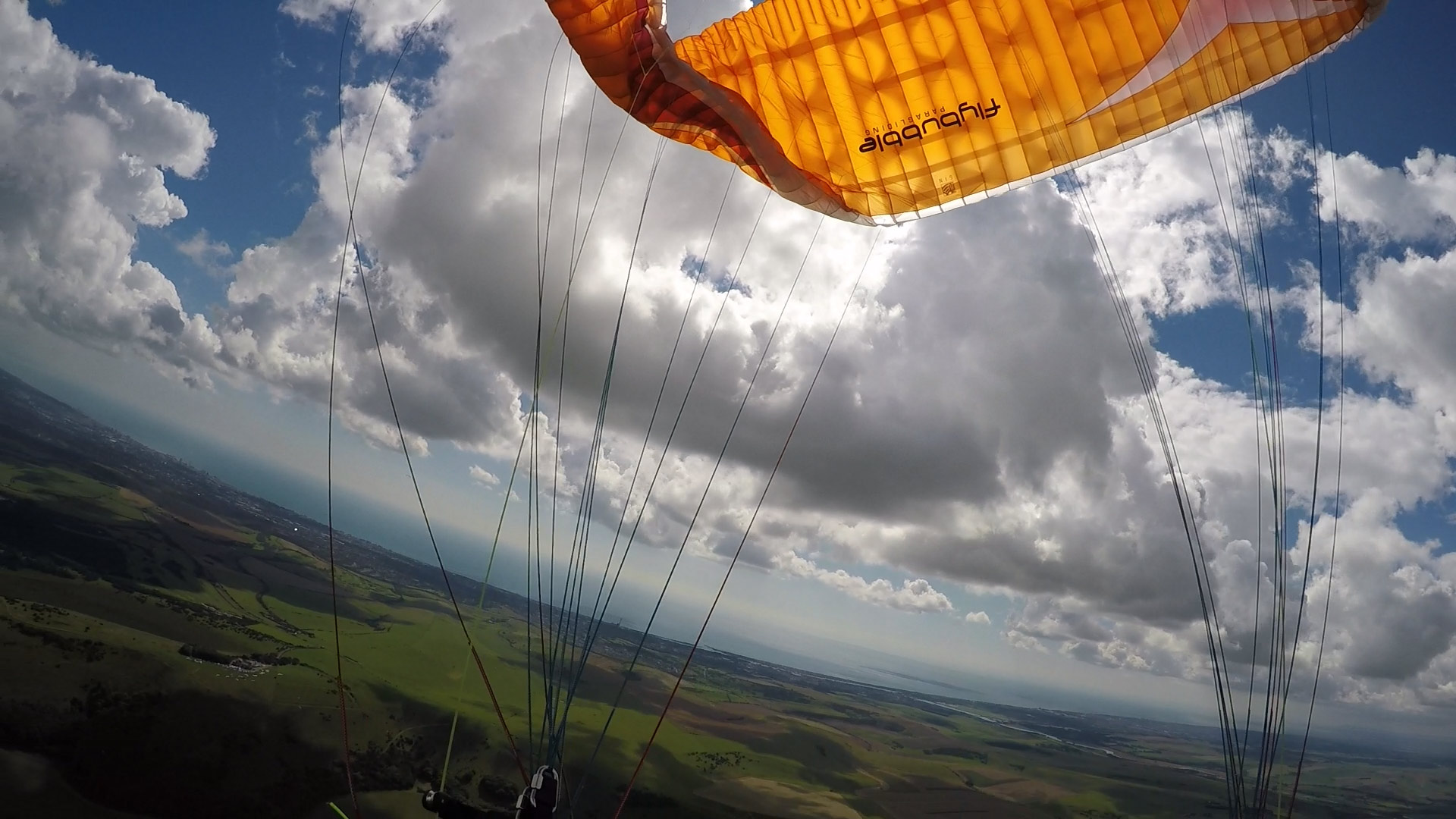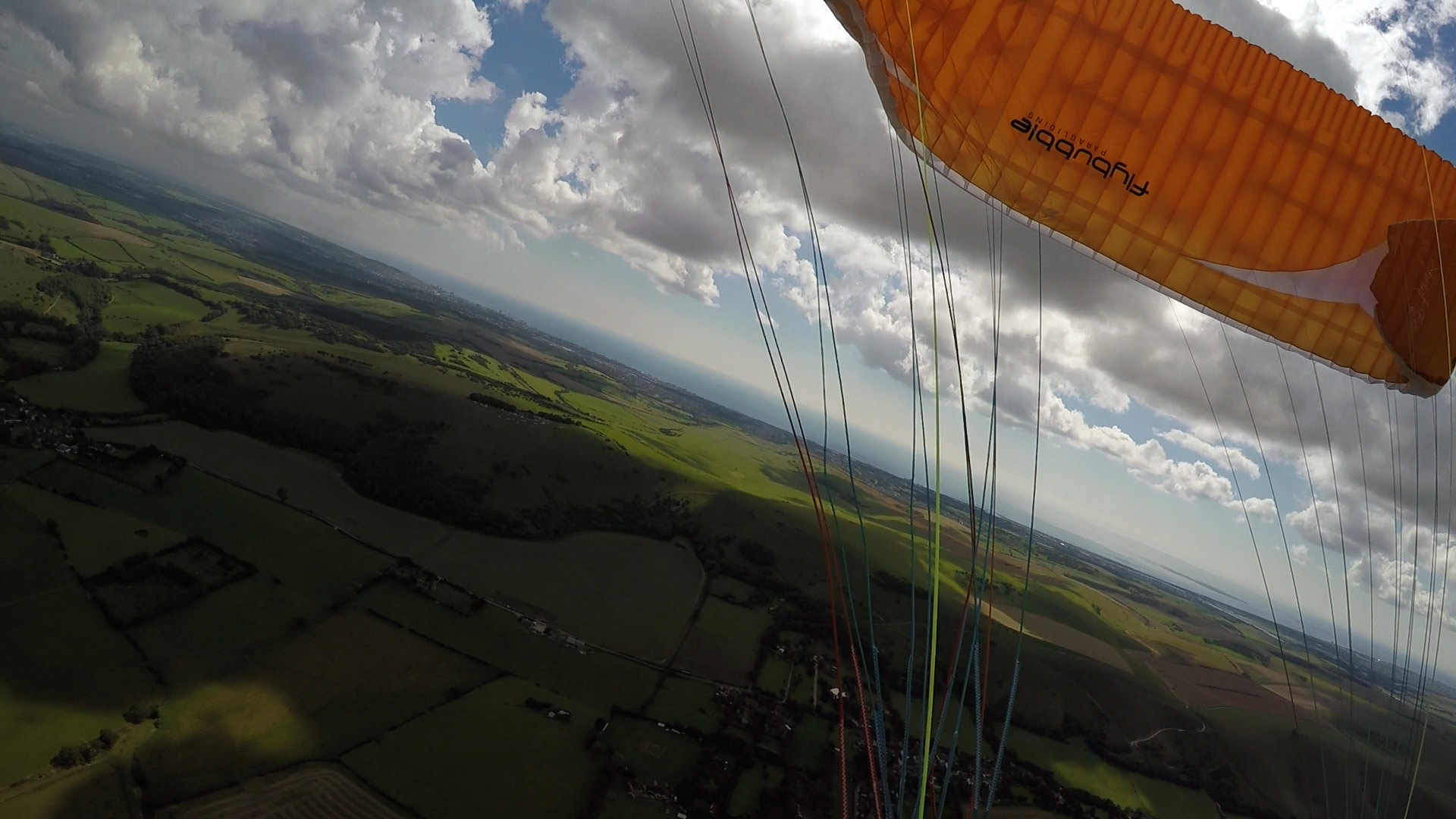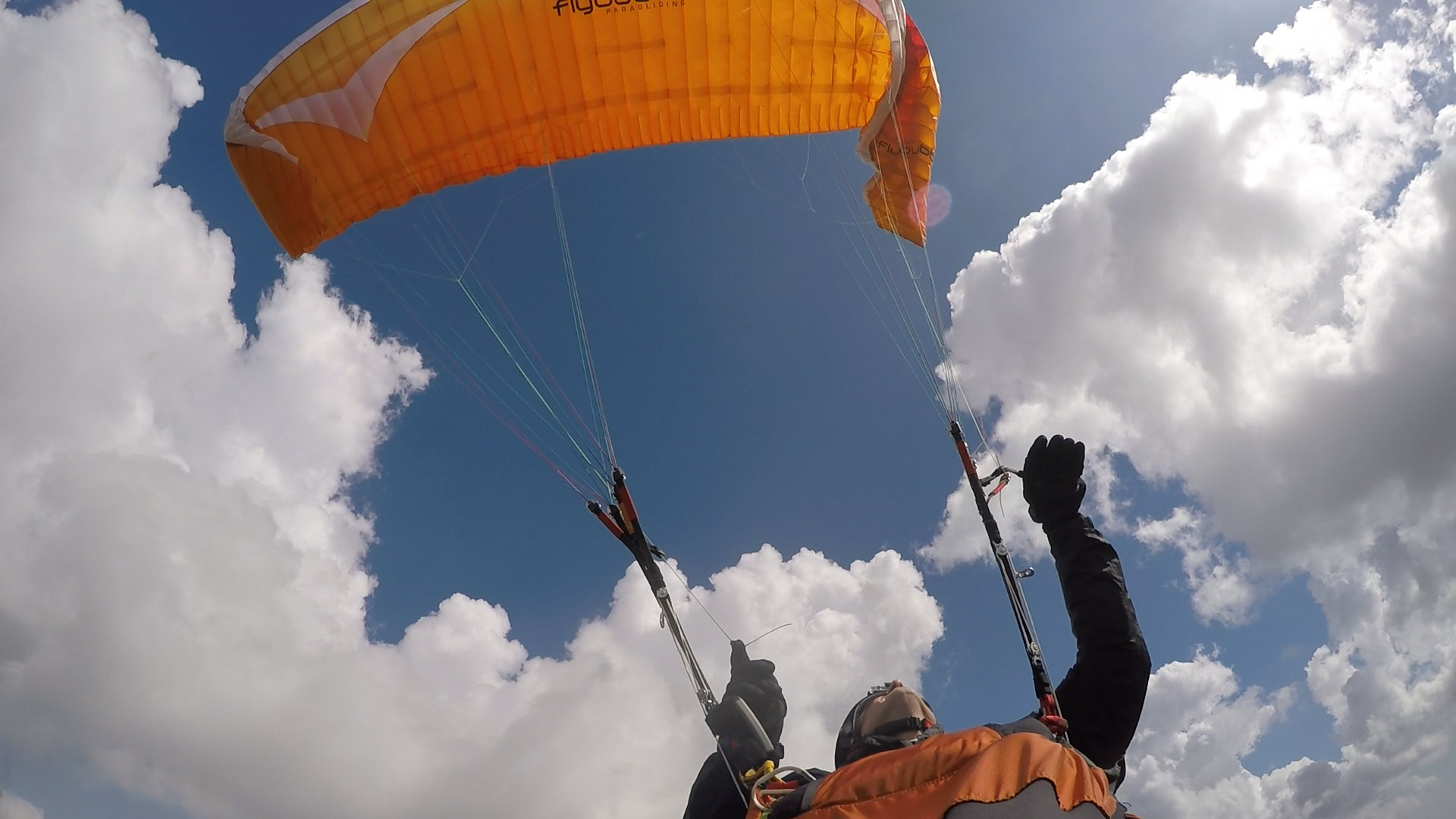- you can control easily
- doesn't collapse often (with your input)
- recovers fast for you
Safe pilot?
You've probably guessed it already: the biggest element of paraglider safety is the pilot. If you haven't done SIV training recently, you can do more to improve your safety. The reaction speed and clear thinking that you bring to a collapse scenario determines the outcome more than anything the wing designer can do.
Certification?
There's a huge disconnect here. The EN certification flight test protocol tests wings for most classes by simulating a collapsed wing with an unresponsive pilot. In real life, the pilot will do one of three things: large panicked responses that make matters worse, moderate corrective input that fixes the problem, or freezing up and doing nothing. The last response can be better than the first, but why put your life in the hands of fate? Learn what the wing does when it shuts down, become familiar with the sensations of high-G manoeuvres, and train regularly.
Now we can have a discussion about the safety of the wing itself.

^ 50% asymmetric collapse, no pilot input
Paraglider safety
Simulating collapses is a tricky business. The EN test is a very controlled environment with strict protocols and highly skilled pilots. No doubt their results are accurate but it can be different in real life. In other words, if you just whack in a 50% asymmetric, it's likely that it won't recover within EN test norms. A slight bit of weightshift, a whiff of turbulence, or an over-enthusiastic yank on the risers, and you get something rather hotter than you were expecting. This has become more noticeable in recent years, as manufacturers push wings up to the limit of the classes.
This means that your friend who owns the Wrockit5 can't tell you much about the wing's safety. This caveat applies to wing reviewers as well. I can't resist the temptation to 'try out a few collapses' on new wings, but I'm wary of the information value. It just helps me form an opinion of the feeling of security.
Broadly speaking, the higher the class, the lower the passive safety of the wing. The higher class wings tend to jump around more and suffer more collapses. If you have good active flying skills you can minimise this: the wing responds faster to corrective inputs, and because the feedback from the wing is higher you can feel what's coming a moment before the wing deforms.
Collapse resistance is improved by loading and tensioning the leading edge area. For example, I have flown an Icepeak 6 for many years in some really stonking conditions, and had no collapses apart from small tip closures, despite flying on a lot of speedbar. But when collapse-resistant wings finally collapse, the recovery can be more violent than softer wings that ball up and recover from a semi-stalled state. Because I'm confident with my SIV skills and fly very actively, I am prepared to introduce wildness in some extreme situations for a wing that reduces the number of blowouts. Your mileage may vary. Again, it's so important to match the wing with the pilot.

^ 50% asymmetric followed by bad pilot input leads to greater height loss and acceleration
Asymmetric collapses
Bringing the discussion back to the XC class, the most common situation you'll face is the asymmetric collapse when scratching on a ridge (at trim speed). Sod's Law dictates that it will happen on the mountain side while going downwind. The wing you don't want is the one which turns fast and dives during its recovery. This is probably the most useful feature of the EN tests: the more extreme this reaction, the higher the rating. However, most modern wings score an A on the 50% asymmetric-from-trim-speed test. Yes, even my Icepeak 6. So it's hard to make a decision based on the EN tests, because they focus on recovery not on collapse tendency.
It's better to look at the underlying cause of the asymmetric: pitch behaviour, the way a wing 'jumps forward' when the brakes are released, or when nearing a thermal. This is useful for experienced pilots, giving you a real feeling of approaching lift, and energy to crank a tight turn. The downside is that if you don't have developed active piloting skills and fast responses, the wing will collapse, over and over, even in 'easy' conditions. Safer wings are trimmed 'nose up', with a deeper camber: they just bumble along and don't need intervention.

^ 50% asymmetric collapse followed by minimal corrective input brings the wing under quick control
Pilot groups
This is why we classify wings according to pilot groups and not EN letters. For example, the Gin Carrera is too hot to be compared with other XC Class wings like the Nova Mentor 4 and Advance Iota despite the fact that they all share an EN B rating. The Carrera has a higher aspect ratio and reacts like other Sports Class wings (Niviuk Artik 4). Have a look at how we group wings on our online shop.
If you fly one class of wing below what you think you're capable of handling, you have room for error. Apart from flying conditions deteriorating, the wing condition changes. Over time the fabric stretches and the line trim goes out. This affects its tendency to collapse and recovery characteristics.
.jpg)
^ Flying around like this will get you into trouble...
Summary
1. Upgrade your skills: doing an SIV is more effective than changing your wing.
2. Collapse resistant wings can be demanding during collapse recovery.
3. Choose the class of wing you think you can still handle in rotten air.
Safety comes from being prepared, so base your decisions on reliable information. What really counts is the knowledge of the wing built up over time by experienced pilots watching the wings in real conditions, not the wing that floats best on 'forum froth'.
We hope this article and accompanying video (see below) have helped you understand paraglider safety.
At Flybubble, we have built our reputation on sharing good advice.
Come on over to our website and see what we have to offer.
How To Choose The Right Paraglider Part Five: Safety video
Brought to you by Flybubble
Like what we do? The best way to support us is to buy gear from us. Also recommend us and be a patron. Thank you!

